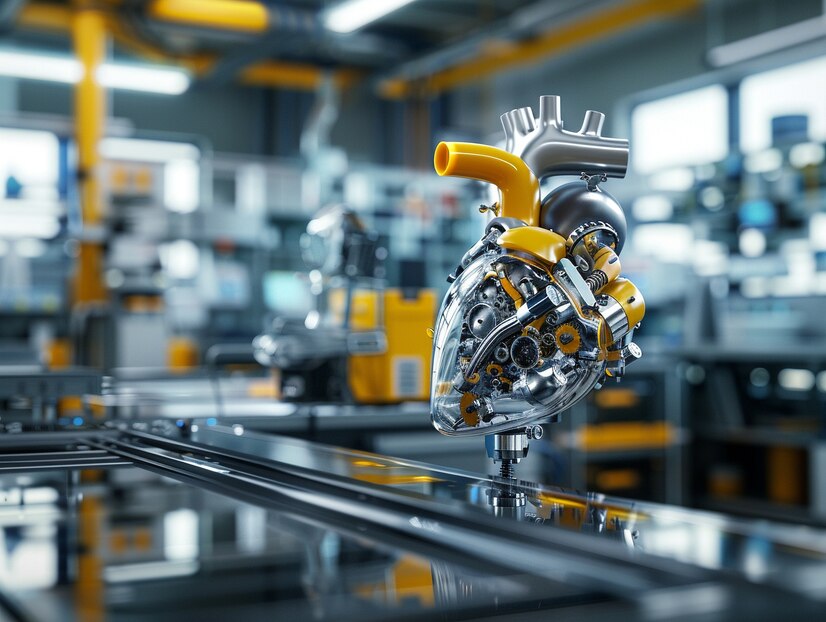This is especially true in the manufacturing industry, where large machines, human resources, and resource-based workflow models are characterized. IT has therefore risen to be one of the major agents of change within this sector as it produces and supports innovation and efficiency leading to competitiveness across the globe. Thus, enhancing business production/profitability, impelling operational efficiency, and ultimately optimizing costs, more companies are turning to a host of evolving IT enablers that are set to transform factories.
This type of change is known as “Industry 4. 0”, which is the integration of manufacturing with digital technologies, by data analytics, AI, cloud computing and IoT.
Now let’s examine the various ways that information technology is changing the manufacturing industry and determining its future.
Automation and Robotics
Undoubtedly, the most perceptible effects of IT software solutions for manufacturing industry are the increasing emergence of automation and robotics. The level of self-automation and application of various robots has increased in line with the development of enhanced software and Machine Learning development and algorithms that make it easier to automate different tasks that used to be handled manually.
Deployed as a part of IT systems, today’s industrial robots are excellent in assembly processes, welding, material handling, and packaging, inclusive. They are known as Robots, which means they may find employment working with humans to reduce risk while increasing productivity.
Internet of Things also known as IoT in Manufacturing
The IoT has the most crucial role to perform for making conventional manufacturing industry as smart manufacturing systems. Thus, devices installed on the production floor and machines and other equipment used on the production floor can communicate to one another and can transmit, receive, and sync their activities respectively in real time.
Many IoT solutions allow the manufacturers to optimize the real time supply chain management, monitor the stock levels and consumption of energy.
Issues of Data Analytics and Artificial Intelligence (AI)
New generation technologies such as data analytics and artificial intelligence are now opening further intelligence in the production houses. In today’s industrial environment, manufacturing plants and production facilities gather large volumes of information from the machines, the processes and even the workers. With the help of big data analytics, it is possible to reveal such aspects as patterns and trends on manufacturing lines.
Another step forward is offered by Artificial Intelligence solutions, which, aside from offering data to manufacturers, give them predictive models that show them demand, inventory, and areas of potential disorganization that could be costly before it happens.
Cloud Computing and Collaboration Tools
It’s now impossible to imagine modern manufacturing without cloud computing that provides the opportunity to store and process data remotely. This helps the manufacturers to expand their IT needs as per their usage and without putting much money for hardware equipment on-site.
Some of the manufacturing processes can cascade from the central ERP cloud that fosters a centralized system where manufacturing, inventory, and supply chain can be controlled from the cloud.
Digital Twins
Digital twin can be looked at as a success of enterprises in the manufacturing industry when it comes to design, simulation, and production. Digital twin is defined as an exact virtual copy of an actual tangible item such as an asset, a product or a process. Real time data collected by IoT sensors and from other sources help manufacturers to build the digital replica of any piece of equipment or line of production.
Through digital twinning, engineers get an opportunity to have an idea on how their product will behave when it is manufactured and put into the market. The plausible effects include the simplification of time to bring new products in the market, enhanced quality, and the elimination of production related costs in early designs.
Another benefit of the application of digital twins for the manufacturing industry, is allowing the manufacturers to implement new configurations in the production system without affecting the current production arrangement and therefore providing high flexibility and creativity in production systems.
Cybersecurity in Manufacturing
The increase of smart digital technologies in manufacturing makes it even more vulnerable to cyber threats if it does not have sufficient cybersecurity measures. Manufacturers are at the high risk of cyber threats that may hinder production, and steal ideas or the entire supply chain.
Manufacturing companies today use several layers of protection which are firewalls, encryption, and Artificial Intelligence cyber threat detection to protect their IT systems.
Also See – Power of Edge Computing in IoT for Smarter Business Operations
Concluding Thoughts
Information technology is fundamentally transforming the manufacturing industry and driving the fourth industrial revolution. From automation and Edge Computing in IoT and cloud computing, adopting advanced IT solutions increases productivity, reduces costs, and enables manufacturers to be more agile and responsive to market demands.
As manufacturing continues to evolve, IT will remain at the heart of this digital transformation, enabling businesses to innovate and thrive in an increasingly competitive environment.



Pingback:Will Medical Coding Be Replaced by AI? - Buddies Reach
Pingback:Enhance Remote Team Collaboration with Microsoft SharePoint